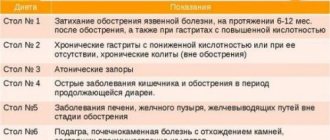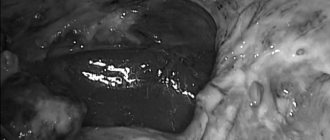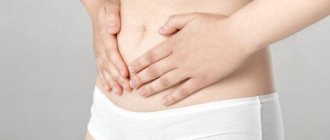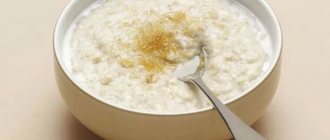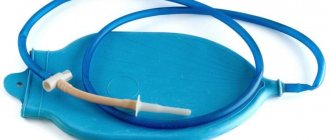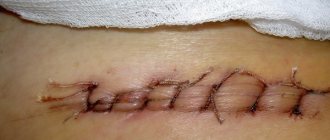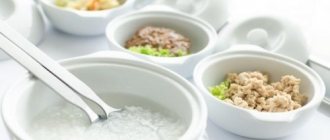- home
- general surgery
- Hiatal hernia
- Laparoscopic Nissen fundoplication - complications after surgery
Existing methods for treating gastroesophageal reflux are aimed at creating an anti-reflux mechanism, which will prevent the reflux of gastric contents into the esophagus. One of the techniques is Nissen fundoplication, in which the fundus of the stomach, wrapping around the lower part of the esophagus 360 degrees, creates a 3-centimeter circular cuff that prevents the reflux of stomach contents.
The intervention is carried out, as a rule, by laparoscopy; all actions are performed through several small punctures on the anterior abdominal wall. After a low-traumatic, short-term operation, the patient recovers quickly, discharge usually occurs on 2-3 days, after two weeks the operated person can return to their usual lifestyle.
However, Nissen fundoplication has a number of disadvantages, which are recognized by leading domestic and foreign gastroenterologists. The ineffectiveness of surgical intervention is evidenced by the fact that the symptoms that bothered the person before the operation not only did not disappear or recurred, but new ones appeared, caused by the operation itself.
There are two groups of symptoms associated with Nissen fundoplication deficiencies.
- In the first case, the cause of symptoms is the application of an overly tight or massive cuff, resulting in dysphagia, but if before the operation it bothered patients only when eating solid food, then after the intervention, discomfort appears even after eating a liquid consistency.
This symptom occurs in 25% of patients undergoing Nissen surgery. Among the new symptoms that were not present before the operation, it should be noted bloating, heaviness in the epigastrium, rapid satiety, however, neither belching nor regurgitation becomes impossible, since due to the formation of the absolute valve in the cardia area, this natural protective function is lost. Any carbonated drink or too much food will lead to pain and a feeling of heaviness in the stomach. A similar picture is observed in 85% of patients who underwent Nissen fundoplication. Also, 20-33% of patients are bothered by diarrhea - 3-5 times a day, which occurs due to a decrease in the volume of the stomach and the rapid entry of its contents into the small intestine. - In the second case, as a result of a defect associated with the operation, the cuff may slip and disrupt the configuration of the transition zone of the esophagus into the stomach, which leads to the resumption of reflux; relapse occurs in 60% of patients within 1-2 years after treatment. Postoperative gastroparesis, which develops in 25-60% of those operated on, is also associated with a configuration disorder. When food arrives, the stomach is not capable of reflexive relaxation and accommodation, and the person experiences rapid satiety, heaviness and pain in the epigastric area.
“The fate of the patient after Nissen fundoplication.” Report by professor-gastroenterologist E.K. Baranskaya (1st Moscow State Medical University named after I.M. Sechenov)
As a result of the symptoms that appear, all patients, some time after surgery, are forced to resume taking medications that alleviate the condition. Thus, the goal that was set when planning the operation: to save the patient from the need to take medications, is not achieved.
After Nissen fundoplication, many patients experience not only a return of symptoms in the early postoperative period, but also progression of the disease with disruption of the configuration of the esophagus. According to statistics, a third of patients need a second operation, or even several. Moreover, each subsequent intervention becomes technically more complex.
As an alternative, I offer patients the 270-degree Tope partial fundoplication, which, compared to the Nissen technique, does not have the above-mentioned disadvantages. Thanks to the modified technique, the physiological functioning of the esophageal sphincter in the postoperative period is guaranteed. Preserving a functional esophagogastric valve allows a person to go without taking medications throughout his life.
According to the recommendations of specialists from the American College of Gastroenterology, patients planning surgical intervention should undergo a thorough examination, including preliminary pH-metry. The qualifications and experience of the surgeon are of no small importance; the specialist performing the operation must have experience of at least 1000 surgical interventions on the digestive organs.
Patients who contact us undergo a comprehensive examination, and treatment tactics are selected strictly individually, taking into account the characteristics of the course of the disease. I have performed more than 2,000 surgical interventions in patients diagnosed with reflux esophagitis and hiatal hernia, the results of which are summarized in three monographs and more than 50 scientific papers published in professional peer-reviewed domestic and foreign publications.
What it is?
Nissen fundoplication is a surgery to eliminate reflux in gastroesophageal reflux disease (GERD).
GERD is a chronic disease in which the contents of the stomach, and sometimes the duodenum, regularly flow back into the esophagus. In this case, the mucous membrane of the esophagus is damaged, dystrophic changes develop in it, and catarrhal or erosive-ulcerative esophagitis (inflammation of the esophagus) is provoked.
The article was checked by the abdominal surgeon of Euromed Clinic Valentin Valerievich Alekseev.
Complications
Fundoplication is a surgical procedure that involves certain risks and consequences. Monitoring the patient's condition after surgery should be careful. Complications after surgery include:
- wound infection (hereinafter referred to as blood poisoning);
- swallowing disorder;
- cuff torsion;
- belching or vomiting;
- intra-abdominal bleeding;
- the occurrence of allergic reactions to the drug;
- nerve damage.
Sometimes the cuff itself may become weak and the esophagus may slip down. A repeat operation is needed here. Clinically, this is manifested by constant heartburn, belching, and pain.
However, the hands of a competent specialist, proper care of the wound, and following the doctor’s recommendations reduce the risk of complications to a minimum.
Why Euromed?
- When performing a Nissen fundoplication, the qualifications of the surgeon play a key role. He must be well acquainted with the technique of the operation and have extensive experience. These are the characteristics that the surgeons of the Euromed clinic have, which means for the patient a comfortable, quick rehabilitation and an extremely low percentage of relapses.
- Euromed is a full-service clinic. Before the operation, we will arrange for you, if necessary, consultations with a therapist, cardiologist and any other specialist; here you can quickly take tests in our laboratory and immediately get the results. The process is organized clearly and takes much less time than in other clinics.
Preparation for the procedure
Before performing a fundoplication, a number of laboratory and diagnostic procedures are required, as well as special preparation of the patient.
The examination used is:
- physical examination;
- manometry (a special test to measure muscle contractions of the esophagus in response to swallowing);
- daily pH monitoring;
- esophagogastroduodenoscopy (to visualize the condition of the mucous membranes of the esophagus, stomach and duodenum, and also, if necessary, for biopsy of tissue samples);
- X-ray of the gastrointestinal tract.
Before surgery, the patient must:
- Consult regarding the use of medications; a week before the proposed operation, you should stop taking the following medications: clopidogrel, warfarin and other anticoagulants, anti-inflammatory drugs.
- Avoid eating and drinking 12 hours before.
- Organize everything necessary for recovery at home after surgery.
The essence of the operation
The operation is performed under general anesthesia.
Nissen fundoplication in our clinic is usually performed laparoscopically - through three small incisions, under general anesthesia. The surgeon wraps the fundus of the stomach around the esophagus and creates a cuff that prevents stomach contents from refluxing into the esophagus.
This restores the tone of the lower esophageal sphincter and improves gastric emptying. The operation lasts 30-60 minutes . After the operation, the patient spends 3-5 days , depending on his condition.
You can make an appointment with the abdominal surgeon at Eueomed Clinic, Candidate of Medical Sciences Valentin Valerievich Alekseev here.
How is fundoplication performed at the Swiss University Clinic in Moscow?
Professor Konstantin Viktorovich Puchkov, who heads the Swiss University Clinic in Moscow and is its chief surgeon, is a world-class specialist in the field of classical and laparoscopic surgery. During his quarter-century of practice, he has performed more than 2,000 advanced laparoscopic Toupet procedures to correct hiatal hernias. These are minimally invasive endovideosurgical interventions through several incisions-punctures of the abdominal wall 5-10 mm long using modern ultrasonic cutting, electrosurgical ligating instruments, and the use of anti-adhesion agents. Being as gentle as possible, such operations allow patients to become more active from the first day, gradually expand their diet, and within six months become completely healthy, completely abandoning dietary, physical restrictions and medications.
Professor Puchkov has specializations and thousands of practical experience in the field of surgical oncology, gynecology, urology and coloproctology. Therefore, he often performs simultaneous (combined) operations, when, under one anesthesia, he performs surgical treatment of several diseases at once. For example, he performs partial Toupet fundoplication for hiatal hernia and cholecystectomy for calculous cholecystitis. And this is another significant advantage.
Despite an extremely busy work schedule, daily operations in Moscow, Geneva or Freiburg, numerous master classes in different countries of the world, management of the Swiss University Clinic in Moscow, scientific and teaching activities, Professor Konstantin Viktorovich Puchkov consults patients remotely every day. After reviewing the medical documents, he will be able to assess your clinical situation, suggest an option for surgical treatment of the hiatal hernia, or provide a second opinion on the recommendations of other doctors. By contacting a consultant in our chat or filling out the application form, you can also agree on a time for a video consultation or an in-person appointment in Moscow with Professor Puchkov.
Diet after Nissen fundoplication
- For the first few days, the patient takes liquid, non-hot food: compotes, drinking yoghurts, iced tea, liquid jelly.
- Next, porridge or puree is introduced into 1-2 meals, then you can gradually move on to soft food.
Cost of the operation: Fundoplasty according to Nissen* - from 90,000 rubles.
*The basic cost of the operation does not include: preoperative examination, anesthesia, histological examination of surgical material and hospital stay.
Hiatoplasty (crurorrhaphy)
While surgeons involved in the treatment of hiatal hernia are arguing about the type of fundoplication, there are no such disputes about the need to suturing the legs of the diaphragm. Everyone thinks that it is necessary to do this. Another thing is that this is often a non-trivial task, the diastasis (distance between) the legs can reach up to 10 cm, and if there is insufficient secretion or tissue weakness, the sutures cut through and a recurrence of the esophageal hernia occurs. Therefore, sometimes meshes of various shapes and manufacturers are used for diaphragm plastic surgery. The use of such meshes slightly reduced the risk of relapses, but as it turned out, sewing in a mesh can lead to a very serious complication, the cutting of a mesh implant into the lumen of the esophagus. This is a serious complication as a result of which, sometimes, the esophagus has to be completely removed and replaced with a stomach. In addition, the mesh implant is often fixed with a stapler, which can damage the heart. Therefore, the use of mesh has not yet become widespread. And even those surgeons who use it say that it is necessary to take an extremely careful approach when choosing the option of hiatal hernia repair with mesh. After completion of crurorrhaphy, the formation of a reflux cuff begins. In cases where the defect between the legs of the diaphragm is large and it is impossible to simply sutured it, we use the method of gastric wall plasty. This method is protected by a patent for an invention and has proven itself well.
Side effects
Although fundoplication surgery can help people control acid reflux and relieve symptoms, side effects are common. For example, a full 360-degree fundoplication helps with reflux symptoms, but also makes it more difficult to open the sphincter at other times to relieve pressure.
This can make it difficult to burp or vomit when needed. Because of this, many people experience side effects from fundoplication, such as increased gas pain in the abdomen, bloating, and increased flatulence.
If the doctor or patient has concerns about side effects caused by increased gas, they may choose an alternative procedure such as a 270- or 180-degree fundoplication.
One 2016 meta-analysis found that 270- and 360-degree fundoplication procedures have similar success rates when it comes to symptom control. Patients who had a 270-degree fundoplication had fewer side effects immediately after surgery, but the risk of side effects from both surgeries tended to level off over time.
Indications and contraindications
Indications
- ineffectiveness of conservative therapy;
- large hernia;
- the presence of complications: ulcers and erosions of the esophagus, bleeding, esophagitis, etc.
- the presence of a sliding paraesophageal hernia with a risk of strangulation;
- dysplasia of the esophageal mucosa with a risk of malignancy;
Contraindications
- some blood diseases;
- severe concomitant diseases in the stage of decompensation (heart disease, renal failure, etc.)
- oncological diseases in the terminal stage.
FAQ
Preparation for crurorrhaphy and bilateral fundoplication according to TOUPET 270 - what does it consist of?
A few days before the operation, foods that can cause bloating should be excluded from the menu. The intervention is carried out on an empty stomach, with the last meal at least 8 hours before the operation. Before the procedure, the intestines must be thoroughly cleansed. If you are taking any medications, you should notify your doctor; some medications may need to be temporarily discontinued.
What are the possible consequences of refusing to perform crurorrhaphy and fundoplication according to TOUPET 270
If treatment is refused, serious complications cannot be ruled out. This could be a peptic ulcer of the esophagus, bleeding as a result of perforation, or a strangulated hernia. In addition, according to statistics, 5-6 years after the onset of the disease, the likelihood of a malignant formation increases three times; after 10 years, the risk of malignancy increases 5 times. The appearance of a tumor is associated with prolonged exposure of gastric contents to tissue, resulting in the development of epithelial metaplasia.
Are there possible complications with crurorrhaphy and fundoplication according to TOUPET 270 and what are they?
During the operation, as with any surgical intervention, there is a risk of complications, for example, bleeding due to damage to nearby organs and tissues, damage to the trunks of the vagus nerves. Among the undesirable consequences in the postoperative period, intestinal obstruction, peritonitis, dysphagia, hiccups, etc. cannot be excluded. Late complications include relapse of the hiatal hernia, reflux esophagitis as a result of “unraveling” of the cuff or cutting through the sutures, and esophageal stricture. However, the surgeon’s experience and the availability of modern equipment minimize the likelihood of complications.
How is rehabilitation going after cruroraphy and fundoplication using TOUPET 270?
The patient can get out of bed even on the day of the operation; after a few hours, he is allowed to drink a little water, and the next day - liquid and warm food. To monitor the correct installation of the anti-reflux valve, an X-ray examination using contrast is performed the day after surgery. Gradually, the diet expands, the patient gradually switches to solid food - all efforts should be aimed at preventing irritation of the esophagus. This can only be done with the help of a diet: for the first 1.5-2 months it is strict, then over the course of six months it gradually softens. Although the patient can return to work 2-3 weeks after the operation, full recovery takes about 6 weeks.
